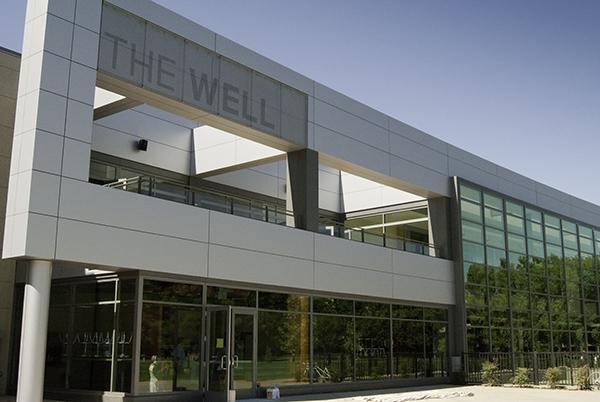Critics question funds for The Well

File photo
The Well :The 150,000-square-foot facility, which opened earlier this month, was paid for by student fees.
September 28, 2010
None of the $25 million in fundraising that some think is meant to go toward The Well, the newly-opened wellness center for students, will be used to fund it, John Kepley, special assistant to Sacramento State President Alexander Gonzalez told The State Hornet Monday.
Instead, the money will be used to pay off “ongoing costs associated with the Spanos Sports complex,” Kepley said.
Kepley’s comments raised questions as to the intentions of the $25 million that Gonzalez promised to raise prior to implementing a $110 student fee increase to pay for the 150,000-square-foot facility.
Critics said the full amount of the fundraising should go to The Well, and decried the fact that the money is being used for other purposes.
Former Associated Students Inc. President Angel Barajas said he disagrees with the university’s decision to use the money for other purposes besides The Well.
“The $25 million in fundraising was meant to solely reduce the monetary impact on students in regards to the costs associated with the Recreation/Wellness/Events Center, as stated in the referendum language,” Barajas said in an e-mail to The Hornet. “Six years later, President Gonzalez has yet to demonstrate the ability to reduce the monetary impact for students by the money he has raised.”
According to the text of the 2004 referendum passed by students to approve construction of The Well, “The commitment of the university is to reduce the impact to students by committing to raise $25 million (cash and/or contract) prior to the ($110) fee being implemented.”
The referendum does not mention that the funding would be used for other purposes besides The Well, and is otherwise unclear on how the fundraising dollars are to be spent.
When asked specifically how the money would be spent, Kepley said it will be used to pay for costs associated with the Broad Athletic Facility, a field house used by the athletics department, located on the east side of the Hornet Stadium. He said there was still debt to be paid on the field house, including the mortgage.
The university has received commitments from donors for $25 million, and has collected $5 million from fundraisers so far, said Sac State spokeswoman Kim Nava. She said the $5 million was used to fund construction of the field house.
Leslie Davis, executive director of The Well, said the money went toward the field house because the athletics department was originally supposed to be part of The Well.
But in December 2005, as construction costs rose, the university decided it would be best to move the athletics department from The Well to a new field house.
This was done because the construction of The Well was funded entirely by student fees, Davis said.
“It wasn’t fair for the student population to pay for athletics to be a part of the building,” Davis said. “It is in the best interest of the average student that athletics is in their own facility.”
Barajas drafted an ASI resolution in 2006 asking Gonzalez not to use The Well’s fundraising dollars on the field house because it was not part of the original referendum.
Gonzalez went ahead with the plan, despite ASI board members’ unanimous adoption of the resolution.
“Remember, this is not an ASI project. This is not a consensus or a democracy,” Gonzalez said, as quoted in a 2006 State Hornet article.
Gonzalez also noted in a letter to the university that:
“While we did not specifically mention it in the student referendum two years ago, we have always known the old field house would need to be replaced. And sure enough, the architect has recommended that we demolish it in order to make sufficient room for a major Recreation, Wellness and Events Center.”
Barajas said he still disagrees that fundraising dollars should have gone to the field house.
“The referendum language or campaign literature never mentioned building a field house known today as the Broad Athletic Facility,” Barajas said. “Having broken the partnership with The Well, the athletics department should not have received a dime from the fundraising associated with the referendum.”
Kevin Wehr, president of the Capitol chapter of the California Faculty Association, said he was unhappy about the way the university used the funds.
“The students were sold a bill of goods that turned out to be false or at least quite misleading,” Wehr said.
Timothy Sandoval can be reached at [email protected].




























































































































